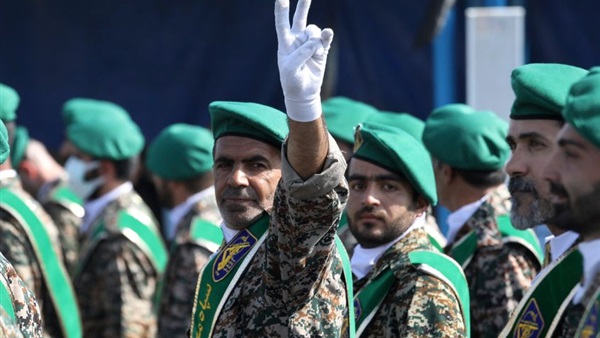Iranian Government Relies on Loyal Supporters as Bulwark Against Protests

When Revolutionary Guard member Mohammed Zareh Mowaydi was killed fighting Iranian protesters last month, the military broadcast footage of his body, with a cleric holding up the dead man’s right hand—rough from years as a farmer.
“Show us your palms,” the cleric shouted, addressing protest supporters. “You, who claim to free our people, are your palms covered in calluses, too?”
Mr. Mowaydi was among thousands of staunch Islamic Republic supporters that the government is counting on to stop a three-month-old protest movement. From the Islamic Revolutionary Guard Corps, or IRGC, to less formal militias, these loyalists have fought demonstrators in the streets, stood up for the Islamic Republic’s values and in some cases, died for them.
About one in five Iranians say they support the current system, according to polls carried out in the country by the Group for Analyzing and Measuring Attitudes in Iran, a nonprofit research foundation in the Netherlands. The government empowers this minority—often from economically humble, socially conservative backgrounds—with perks, jobs and guns, making it a force for maintaining the status quo.
“There is a thin but hard-core infrastructure that is deeply loyal,” said Sanam Vakil, deputy director of the Middle East North Africa program at Britain’s Royal Institute of International Affairs, or Chatham House. Without these supporters, she said, “the regime would fracture.”
“The die-hards have nowhere to go,” she said, adding: “This is why the regime is still confident and in charge.”
Now, their loyalty is facing a test, as they try to put down the toughest challenge to the Islamic Republic in over a decade. At least 62 government supporters have been killed in the protests, along with 502 protesters, according to the Human Rights Activists News Agency, which documents human-rights violations in Iran.
The unrest began in September after the death of 22-year-old Mahsa Amini in police custody for allegedly violating Iran’s female dress code. The protests started with demands for the end of the mandatory headscarf and grew into calls for the demise of Supreme Leader Ayatollah Ali Khamenei and the Islamic system of governance.
The protests’ durability has surprised outside observers, though Western and Middle East governments have assessed the demonstrations don’t yet pose the threat of toppling Tehran’s leadership.
The most visible group opposing the protesters is the Basij, a volunteer force of 700,000 people formed as a youth militia during the 1979 revolution that has since become an institution that permeates Iranian society. The Basij is a hard-line defender of the Islamic Republic as a religiously dominated political system with Mr. Khamenei as its undisputed head of state. The Basij advocates maintaining a strict female dress code, supports Iran’s regional military moves as a means of defending holy Muslim sites and opposes any normalization in relations with the U.S. and Israel.
Others include the IRGC, a 210,000-strong army dedicated to protecting the government against domestic unrest and foreign attacks, as well as the Iranian Hezbollah, a more extreme militia that advocates a full theocracy.
Iran grooms young people from conservative families to join the Basij, with training in religious principles and the government’s anti-Western views at children’s boot camps and neighborhood clubs, said Saeid Golkar, an authority on Iran’s security services who teaches at the University of Tennessee at Chattanooga, Tenn. Young loyalists get priority at the Iran’s best universities, putting them in line for top government positions and well-paid jobs at companies controlled by hard-line factions, Mr. Golkar said.
Basij members made up a large part of the shock troops sent to contain protests in Tehran, the city of Shiraz in southern Iran, as well as the Sistan-Baluchistan and Kurdish provinces where violence has taken a militarized turn, according to Iran’s state media.
They are instrumental in guarding important government buildings. And as the country’s morality police have faded into the background after the outrage over Ms. Amini’s death, the Basij have helped enforce laws around public dress code and behavior, often violently.
Basij members have been particularly visible in skirmishes on Iran’s university campuses.
In recent protests at the elite Sharif University of Technology in Tehran, Mohammad Reza Ziyai, a student Basij leader, was in charge of a campaign against students demonstrating for an end to the Islamic Republic. Mr. Ziyai and his 50-strong group debated how to punish the protesters, who were calling for the death of the country’s leader.
He told The Wall Street Journal that he is the student who said in a video posted in October: “If they say slogans against Khamenei, we will stand against them.”
Soon after, plainclothes officers brandishing batons and guns stormed the university.
Human-rights groups have criticized the Basij, the IRGC and other loyalist groups for the use of violence against protesters. Amnesty International said it has documented their use of live ammunition, birdshot, metal pellets, tear gas and water cannons. The U.S., the European Union and the U.K. have sanctioned the leaders of the Basij for their use of violence in putting down the protests.
As actors, athletes and professionals have thrown their support behind the protest movement, the government has held up its most loyal supporters as models for the nation. Last month, Mr. Khamenei singled out the Basij for praise and expressed admiration for those who lost their lives fighting the demonstrations, which he called riots.
“They have sacrificed their lives to protect people from rioters,” he said in a televised speech widely interpreted as a pep talk for the Basij.
Protesters have targeted the Basij as a symbol of the Islamic Republic, torching their offices and clashing with them in the streets. Most of the demonstrators who have been sentenced to death were convicted of killing Basij members. Among the convicted is protester Majidreza Rahnavard, who was executed earlier in December for the deaths of two Basij members.
Basij members often move to the IRGC for more-formal security roles. That was Mr. Mowaydi’s path. He grew up on a farm in a village near Shiraz, joined the Basij, trained as an imam and then went to the IRGC’s Quds Force, an Iranian paramilitary group deployed abroad.
Mr. Mowaydi, 37, fought with the Quds Force to defend the government of Bashar al-Assad in Syria, surviving combat with Islamic State and other extremist and rebel groups, according to Iran’s state media.
He was scheduled to return to his posting as a sniper in Syria in December after his tour on protest duty, his aunt told the conservative news agency Fars. But on Nov. 15, he was hit on the head by a Molotov cocktail during a protest in Shiraz and later died from his injuries.
“He was ready to sacrifice his life,” his brother Abdur Rahim told Iran’s military news agency, Defa Press. “In the end, he got his wish.”







